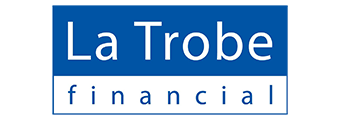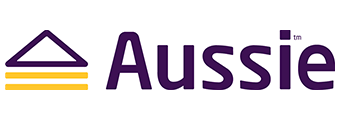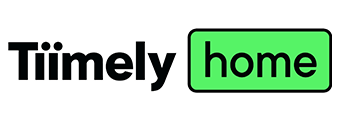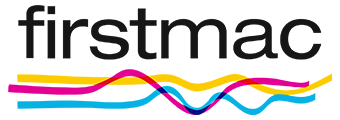| Lender | Home Loan | Interest Rate | Comparison Rate* | Monthly Repayment | Repayment type | Rate Type | Offset | Redraw | Ongoing Fees | Upfront Fees | Max LVR | Lump Sum Repayment | Extra Repayments | Split Loan Option | Tags | Features | Link | Compare | Promoted Product | Disclosure |
|---|---|---|---|---|---|---|---|---|---|---|---|---|---|---|---|---|---|---|---|---|
6.23% p.a. | 6.30% p.a. | $2,596 | Interest-only | Variable | $0 | $450 | 80% | |||||||||||||
6.29% p.a. | 6.57% p.a. | $3,092 | Principal & Interest | Variable | $295 | $0 | 85% | |||||||||||||
6.59% p.a. | 6.77% p.a. | $3,190 | Principal & Interest | Variable | $10 | $1,325 | 80% | |||||||||||||
6.49% p.a. | 7.01% p.a. | $3,157 | Principal & Interest | Variable | $0 | $0 | 80% | |||||||||||||
7.19% p.a. | 7.45% p.a. | $3,391 | Principal & Interest | Variable | $15 | $1,559 | 80% |
Low doc home loans can provide a path to property ownership for people who might find traditional mortgage requirements out of reach due to an unusual income stream.
What is a low doc home loan?
Low doc – short for low documentation – home loans are designed for people who might struggle to provide two years of tax returns or the financial records required for a traditional home loan. They might be particularly appealing to self-employed individuals, freelancers, and small business owners.
However, this flexibility can come at a cost. Low doc home loans typically demand higher interest rates and fees due to the perceived increased risk they present to a lender. Additionally, low doc home loans often require a lower loan-to-value ratio (LVR), meaning a borrower might need a larger deposit.
What's the difference between low doc home loans and regular home loans?
The primary distinction between traditional and low doc home loans two lies in the documentation that needs to be provided for loan approval.
While borrowers might traditionally need to provide pay slips, employment history, tax returns, or financial statements to prove their income, those applying for a low doc home loan may offer alternative evidence of cash flow. Such might include Business Activity Statements, bank statements, or an accountant's letter.
How to compare loc doc home loans
Low doc home loans generally represent a higher risk to a lender and, thus, tend to advertise higher interest rates. Aside from that, they typically don't offer the abundance of features that traditional home loans often do.
So, when comparing low doc mortgages, it's important you take the time to consider what you need in a home loan, what you want, and what you can do without.
Key factors to consider include:
Interest rate
A home loan's interest rate (and the balance of their loan) determines the size of a borrower's repayments. A lower interest rate will generally mean lower repayments.
Comparison rate
The comparison rate factors in the cost of fees and charges, as well as interest, considering a $150,000 mortgage with a 25-year loan term. That means it can be a more wholistic representation of the cost of a home loan.
Eligibility criteria
Eligibility requirements for low doc home loans may differ between lenders, but you'll typically need to have a registered Australian Business Number (ABN) and be self-employed, running a small business, contracting, or freelancing.
Maximum LVR
Many low doc lenders require bigger deposits than traditional mortgages – sometimes up to 30%. Others may accept as little as 10%, so it pays for borrowers to shop around.
Features
Features like offset accounts, redraw facilities, fixed rates, and split rates aren't always offered on low doc home loans. If you'd benefit greatly from any features, make sure you check the home loan you're considering offers them.
Fees
Finally, it's important to consider any fees charged by a lender, whether they be application fees, annual fees, or fees for the provision of features like an offset account.
Are low doc home loans riskier than traditional mortgages?
Low doc home loans can represent a larger risk to a lender than a traditional mortgage – at least on paper.
In 2014, modelling by the Reserve Bank of Australia (RBA) found low doc loans were about 80% more likely to fall into arrears than full-doc mortgages. APRA data paints a similar picture: low doc loans made up just 0.16% of outstanding housing credit held by banks, but accounted for 1.25% of housing debt overdue by 30 to 89 days.
But that doesn't mean the loans themselves are 'bad'. The increased risk may come down to who applies for them.
The RBA noted low doc products are popular among the self-employed, who often have more volatile incomes. They also may attract those who might struggle to qualify for standard mortgages – such as high-risk borrowers or refinancers under financial stress.
How popular are low doc home loans?
Low doc home loans have become less popular in recent years, at least among banks. APRA data – which covers banks but not non-bank lenders – shows low doc mortgages take up a shrinking portion of bank's loan books.
In the June quarter of 2025, banks held $2.39 trillion of outstanding debt tied to residential property. Just $3.8 billion of that was deemed low documentation – representing 1.25%, down from 3.29% in the same quarter of 2019.
But that doesn't necessarily mean borrowers have lost interest. It may mean more now turn to non-bank lenders, for which we don't have such clear data.
What documents do you need to apply for a low doc home loan?
The specific documents required to secure a low doc home loan can vary, and borrowers might be able to mix-and-match those they provide.
Ultimately, a lender will want to see you receive the income you say you do from the sources you say you get it from. Documents that can help prove this include:
-
Registered business name and ABN
Providing an ABN and a registered business name can help prove you're legitimately self-employed. -
Business Activity Statements (BAS)
Usually, providing 12 months' of statements can help evidence your income. -
Business financial statements
Your business' financial statements can give a lender a broader view of its financial health. -
Accountant's letter
An official statement from a certified accountant can also help to verify your income. -
Self-certified income declaration
You might also want to provide a declaration from yourself confirming your income. -
Proof of identity
Just because you're applying for a low doc home loan doesn't mean you don't need to prove you are who you say you are. -
Credit report
Your lender will likely access your credit history to assess your creditworthiness and past financial behavior. -
Property details
A lender will also want specific information on the property being purchased as it will likely be used as security against the home loan.
What are the pros and cons of low doc home loans?
Pros of low doc home loans:
- Access to finance
Low doc mortgages provide financing solutions tailored for self-employed borrowers or those with non-traditional income stream - Features
They can offer many standard home loan features, such as offset accounts and the ability to make additional repayments - Flexibility
Low doc loans borrowers can come with principal and interest or interest-only repayment options
Cons of low doc home loans:
- Fewer choices
Not all lenders offer low doc loans, leaving a low doc borrower with fewer choices when it comes to lenders - Higher rates
Low doc loans also typically come with higher interest rates compared to standard home loans - Larger deposits
Low doc home loans generally require lower LVRs, meaning borrowers may need a larger deposit than they otherwise might - Fees
These loan products may demand higher fees, which could add to the overall cost of the loan
Which lenders offer low doc home loans?
Several lenders offer low doc home loans in Australia, including:
CommBank
The nation's largest bank offers a simplified verification process for applicants who own their own business.
Liberty Financial
This lender offers low doc home loans with flexible income verification and LVRs as high as 85%.
Pepper Money
Pepper's Alt Doc Loan option is for self-employed or small business owner borrowers, including those who have impaired credit.
Yard
Yard typically lends to self-employed borrowers who have two years of trading history under the same ABN, but it may consider those who have traded for at least 6 months. It also has options for LVRs as high as 90%.
Every lender has unique criteria and terms for their low doc home loan products.
Frequently asked questions on low doc home loans
Yes, you can switch from a low doc home loan to a regular (full doc) home loan if you later have the standard documentation required for a regular loan.
This transition typically involves refinancing to a new home loan product or lender.
If you’re self-employed, your borrowing capacity may be lower than it would be if you were employed in the traditional sense. Though, how much a particularly lender will lend to you will likely depend on its individual policies and procedures.
If you’re self-employed, a lender might not let you borrow without a sizable deposit, or might ask that you pay for Lenders Mortgage Insurance (LMI).
Additionally, a self-employed borrower with a proven track record of long-term, stable income may be able to borrow more than someone who has been self-employed for a shorter period or has a less consistent income history.
Without some form of employment, whether it be self-employment, casual employment, or freelance work, it will likely be difficult to secure a home loan, as you'll struggle to meet serviceability testing and, if you did get a mortgage, you mightn’t be able to meet the repayments.
Your income is normally the main factor that a lender will consider when it determines whether or not to give you a loan.
Unless you're flush with disposable cash, buying a house with no income is near impossible.
However, you can typically buy a home with a low income, as long as you’re able to prove you can repay the loan and you have a good credit history.
When getting a low doc home loan, lenders will simply want to know the sources of your income. Documents that can help to prove this are: Registered business name and ABN, Business Activity Statements (BAS), Business financial statements, Self-certified income declaration, Accountant's letter, Proof of identity, Credit history report, and Property details.
Low doc home loan interest rates are typically higher than those of regular home loans, as lenders consider low doc borrowers to be higher risk. However, with a deposit of 40% or more, you might be able to obtain interest rates similar to standard home loans.
Latest Home Loan Lenders' Interest Rates
Looking for a specific Home Loan Provider? Explore the brands we compare to see a list of their products, rates and features.

Get help finding
the right home loan
Not sure which type of loan is best for your needs?
Your Mortgage can help you find out.

























